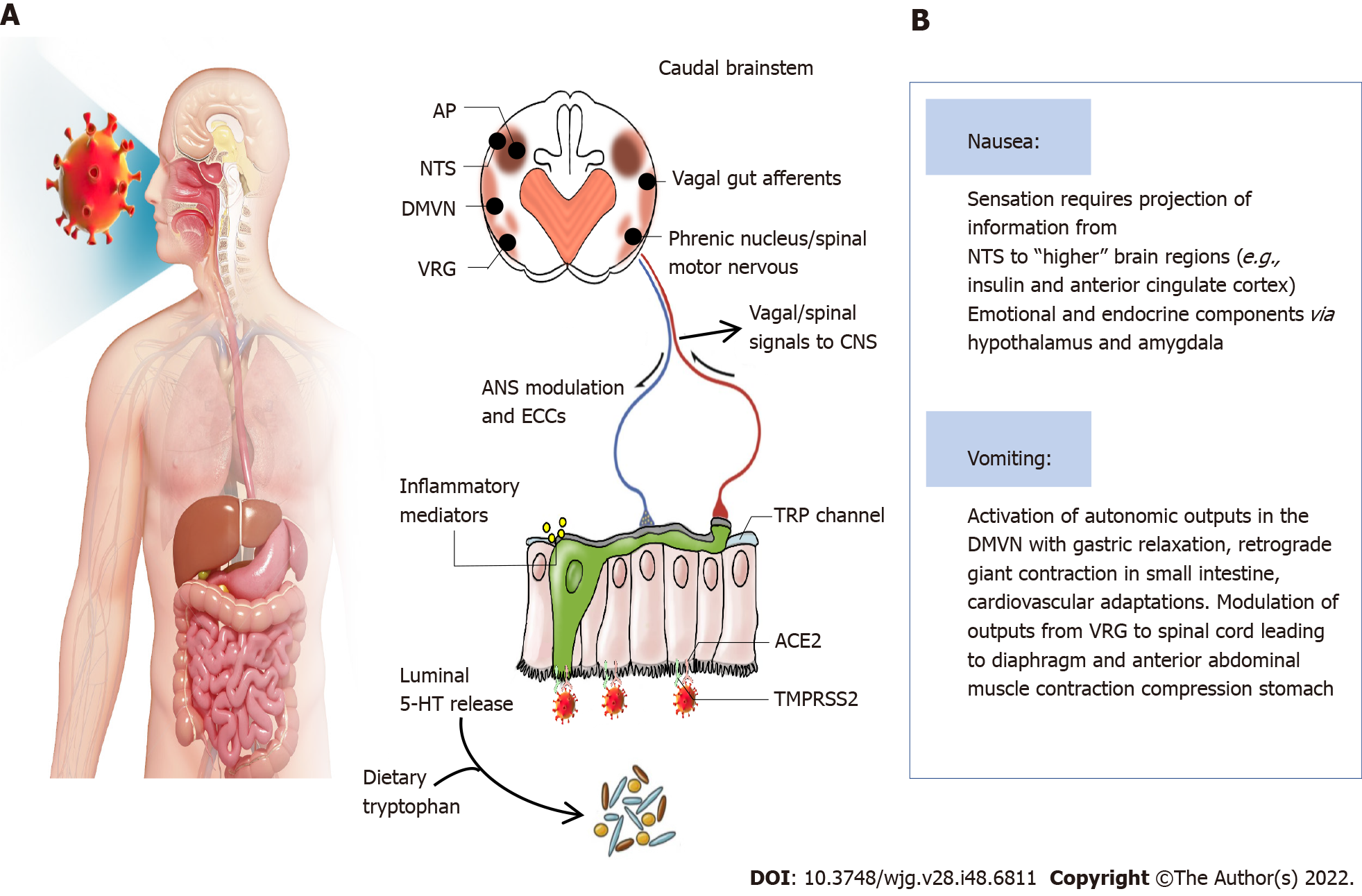Copyright
©The Author(s) 2022.
World J Gastroenterol. Dec 28, 2022; 28(48): 6811-6826
Published online Dec 28, 2022. doi: 10.3748/wjg.v28.i48.6811
Published online Dec 28, 2022. doi: 10.3748/wjg.v28.i48.6811
Figure 4 Potential mechanisms for coronavirus disease 2019-induced nausea and vomiting.
A: The virus enters the body through the airways and digestive tract during swallowing and the potential mechanisms for coronavirus disease 2019 to induce nausea and vomiting (based on the evidence discussed in the text). The virus interacts with digestive tract epithelium leading to the release of neuroactive agents from enteroendocrine cells and inflammatory mediations, and these can act by stimulating or sensitizing abdominal vagal afferent terminals; B: The consequences of vagal afferent and area postrema activation induce nausea and vomiting by projection of information to nausea and anorexia-related regions, and vomiting by motor pathways in the ventral brainstem and spinal cord. 5-HT: 5-hydroxytryptamine; ACE2: Angiotensin-converting enzyme-2; AP: Area postrema; DMVN: Dorsal motor vagal nucleus; NTS: Nucleus tractus solitarius; TMPRSS2: Transmembrane protease serine 2; VRG: Ventral respiratory group of neurons; TRP: Transient receptor potential; ANS: Autonomic nervous system; ECCs: Enteroendocrine cells.
- Citation: Yao Y, Liu ZJ, Zhang YK, Sun HJ. Mechanism and potential treatments for gastrointestinal dysfunction in patients with COVID-19. World J Gastroenterol 2022; 28(48): 6811-6826
- URL: https://www.wjgnet.com/1007-9327/full/v28/i48/6811.htm
- DOI: https://dx.doi.org/10.3748/wjg.v28.i48.6811









